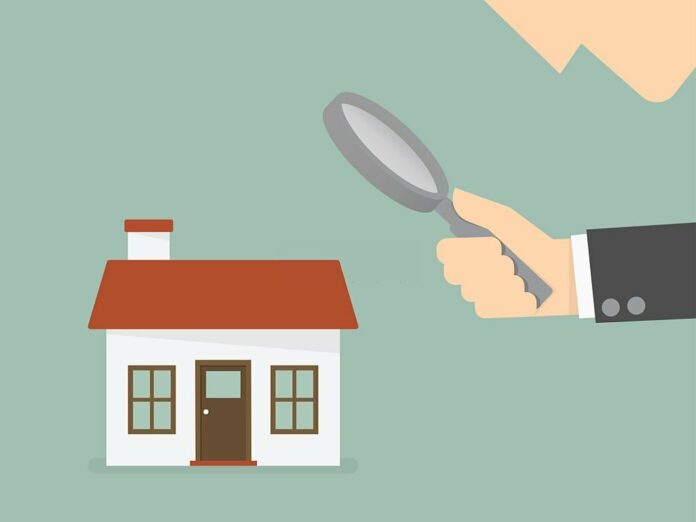The Gateway City, St. Louis, is a treasure trove of architectural gems, boasting a rich tapestry of historic homes that have withstood the test of time. From the stately Victorian mansions that line the tree-lined streets to the charming brick bungalows nestled in cozy neighborhoods, these properties exude a character and charm that is uniquely St. Louisan.
However, as enchanting as these historic homes may be, they also present unique challenges when it comes to home inspections. The age and construction methods of these dwellings often necessitate a more nuanced approach, requiring inspectors to possess a deep understanding of the quirks and idiosyncrasies inherent in older structures.
The Allure of Historic Homes
There’s something undeniably captivating about owning a piece of history. The ornate woodwork, the intricate architectural details, and the stories embedded within the very walls of these homes hold an irresistible allure for many homebuyers. It’s a chance to become a steward of the past, preserving the legacy of a bygone era while adapting it to the conveniences of modern living.
Yet, as with any aging edifice, these historic homes come with their fair share of potential issues. The challenges can be numerous from outdated electrical systems and antiquated plumbing to structural concerns and potential hazards like lead paint or asbestos. It’s here that the expertise of a skilled St Louis home inspection professional becomes invaluable.
The Inspector’s Role: A Delicate Balance
Home inspectors tasked with evaluating historic properties in St. Louis must strike a delicate balance between preserving the integrity of these architectural treasures and ensuring the safety and livability of the dwelling for its inhabitants. It’s a fine line to walk, requiring a deep well of knowledge and experience.
One of the primary concerns when inspecting an older home is the structural integrity of the building. Over the decades, these homes have endured the relentless onslaught of weather, settling, and the ravages of time. Inspectors must be vigilant in identifying any potential structural issues, from sagging floors and cracked foundations to compromised load-bearing walls or rotting support beams.
Understanding Historical Construction Methods
To accurately assess the condition of a historic home, inspectors must have a firm grasp of the construction methods and materials used during the era in which the property was built. This knowledge allows them to recognize potential issues that may not be immediately apparent to the untrained eye.
For example, many older homes in St. Louis were constructed using materials that are no longer commonly used today, such as knob-and-tube wiring or lead-based paints. Inspectors must be able to identify these materials and advise homeowners on the appropriate course of action, whether that involves remediation, replacement, or simply monitoring the situation.
Balancing Preservation and Modernization
One of the greatest challenges in inspecting historic homes lies in striking the right balance between preserving the original character of the property and ensuring it meets modern safety and efficiency standards. Homeowners often wish to maintain the authentic charm of their historic abode while still enjoying the conveniences of contemporary living.
Inspectors must be skilled in identifying areas where updates or modifications may be necessary, such as upgrading electrical systems, improving insulation, or enhancing energy efficiency. However, they must also be mindful of preserving the historical integrity of the home, recommending solutions that minimize disruption to the original design and materials.
The Importance of Experience and Expertise
Given the unique challenges posed by historic homes, homebuyers in St. Louis need to seek out inspectors with specialized experience and expertise in evaluating these types of properties. These professionals have honed their skills through years of inspecting older dwellings, enabling them to identify potential issues that might otherwise go unnoticed.
Experience also plays a crucial role in understanding the nuances of different architectural styles and construction methods prevalent throughout St. Louis’s varied neighborhoods. An inspector well-versed in the intricacies of Victorian homes, for instance, may be better equipped to evaluate the unique challenges posed by these grand structures, from their ornate detailing to their complex roof systems.
Continuing Education and Professional Development
The field of home inspection is constantly evolving, with new technologies, materials, and best practices emerging regularly. Consequently, inspectors must remain committed to ongoing education and professional development, ensuring they stay abreast of the latest advancements and industry standards.
Many professional organizations offer specialized training and certifications for inspectors working with historic homes, covering topics such as identifying and addressing lead-based paint, asbestos, and other hazardous materials commonly found in older dwellings. By pursuing these educational opportunities, inspectors can further refine their skills and deepen their understanding of the unique challenges posed by historic properties.
Embracing the Charm while Mitigating Risks
Owning a historic home in St. Louis is a truly special experience, offering homeowners the opportunity to immerse themselves in the rich tapestry of the city’s architectural heritage. However, this privilege comes with its own set of responsibilities and potential risks.
By partnering with an experienced and knowledgeable St Louis home inspection professional, homebuyers can navigate the challenges of historic home ownership with confidence. These experts can provide invaluable insights into the condition of the property, identifying areas of concern and recommending solutions that strike the right balance between preserving the home’s character and ensuring its safety and livability.
Educating Homeowners
In addition to their technical expertise, skilled inspectors also play a crucial role in educating homeowners about the unique considerations involved in owning a historic property. They can guide proper maintenance techniques, recommend reputable contractors who specialize in working with older homes, and offer advice on navigating the often-complex world of historic preservation regulations.
By fostering a deeper understanding of the challenges and responsibilities associated with historic home ownership, inspectors empower homeowners to make informed decisions and take proactive steps to safeguard the longevity and integrity of their cherished abodes.
Conclusion
As St. Louis continues to celebrate and embrace its rich architectural heritage, the role of skilled and experienced home inspectors becomes increasingly vital. These professionals serve as stewards of both the past and the future, ensuring that the city’s historic homes remain standing tall, offering a glimpse into the stories and craftsmanship of bygone eras while also meeting the demands of modern living.
By combining a deep reverence for the city’s architectural legacy with a keen understanding of contemporary building practices and safety standards, St Louis home inspection experts play a pivotal role in preserving these treasured properties for generations to come. Through their diligence and expertise, they help homeowners navigate the unique challenges posed by historic homes, ensuring that these architectural gems remain not only standing but thriving, cherished, and celebrated for years to come.



